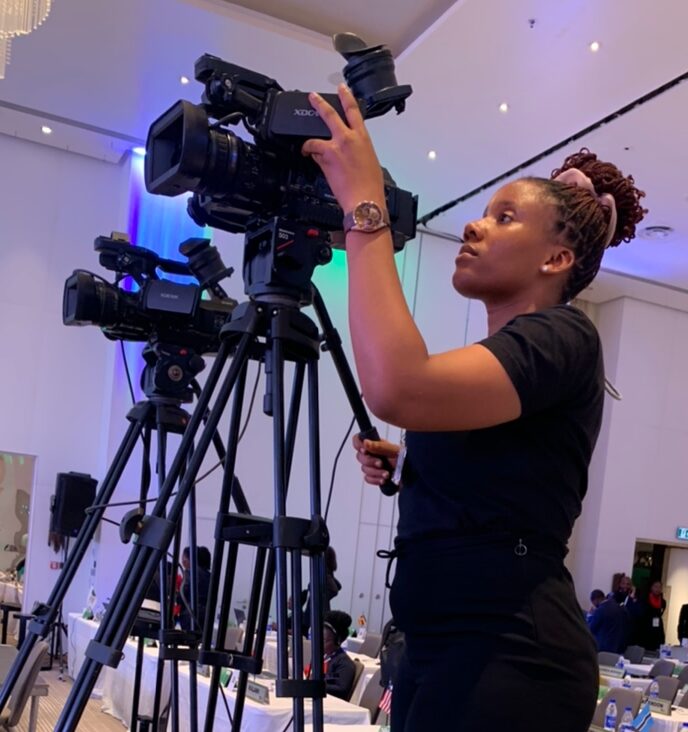Groundbreaking Workshop on AI and Technology-Facilitated Gender-Based Violence at AWiM24
Trending
Saturday May 31, 2025
Trending

It was on a sunny Saturday afternoon in the city of Lagos, Nigeria when Ms. Hannah Sampson ran into a former male colleague while on the field for a production she was working on at that time, after exchanging pleasantries and with a cheerful smile still on her face, she informed him she is now a freelancer and requested he contacts her whenever he needs the services of a cinematographer. But that day, she got the shock of her life.
“I don’t like calling women for work because I will be so soft on them and won’t be able to shout or give them instructions to work effectively” was the response that followed her humble request.
At this point, she became speechless while wondering what it will take to dismantle the long-standing societal belief that women are less capable to take up job roles originally perceived to be exclusive to men.
“This is one of the many challenges female cinematographers face, a lot of producers prefer to go for men due to the notion that they will perform better than women who are presumed soft and weak,” Hannah told AWiM News.
Hannah is one of the very few women in Nigeria, Africa, and the world at large working so hard as cinematographers to change the narrative that certain jobs should be reserved for the male gender.
The percentage of women in cinematography is the lowest of all major film jobs with only 4% of female cinematographers sitting on the box office top 250.
For many years, women have experienced undue marginalization and poor representation in almost all meaningful sectors, especially in film and media leading to negative portrayal of women which only began to change for the better in recent years.
The modified representation and stereotype of African women were related to the rise of media ownership and creative control attained by women.” Says Dr. Sherin Moody, a lecturer at the faculty of Communication and Mass Media, The British University in Egypt who spoke at the 2022 African Women in Media conference.
Dr. Sherin while presenting her paper which analyzed the representation of African women both in olden and contemporary movies found that black women were previously portrayed as overweight, sexually promiscuous, loud, and abusive until the launch of Netflix, during the COVID-19 era in 2020, and at the peak of Black Lives Matter movement when advocates called for improved media portrayal of African women.
Being a cinematographer (Director of Photography) involves deciding a camera’s movement, viewpoint, and focus, influencing a movie’s outcome and feel. But for years, women like Hannah have been denied of having that influence while men continued to monopolize the power to decide what the audience gets to see in subtle ways they may not be aware of.
Hannah thinks the male dominance of the creative industry is a societal thing continually fueled by the patriarchal nature of society which categorizes seemingly hard job roles to be reserved for men. According to her, the ratio of men to women in cinematography is 90:10.
Like most other female creatives, Hannah had a not-so-smooth entrance into the creative industry but says she learned to take it one step at a time.
“Most times I get comments like ‘you’re too soft and too fine to be a cinematographer’ but I promised myself that I will not be that cinematographer that will change my appearance to that of a guy just to appear strong and masculine. I want to maintain my feminine look while on the job.”
“It’s kind of discouraging for people still trying to get into the space because people don’t get to call you for jobs because they feel you can’t do it even without a trial.” She added.
Hannah who described her experience as a female cinematographer as a ‘funny one’ recalls a time she went to a production where she was the only lady. The producer said she had to share a room with a guy to save cost and that she can’t have a whole room all to herself.
“Normally, you can pair up 2-3 guys in a room and cut cost but because there are just a few women in this industry, most times you won’t have up to two ladies and you will have the challenge of incurring more cost. this is one thing that discourages people from employing the services of female cinematographers.” She lamented.
Although Hannah studied Accounting in college, the creative industry has always been a field she has a keen interest. From joining the media team in her church as a young high school girl to assisting her friends who worked as cinematographers even while she had a different job after college.
She later switched to cinematography in 2020 when she registered as an apprentice to learn on the job before she was employed to work for the company full-time.
“I registered for film school and graduated last October. Now I’m a freelancer but also ventured unto learning video editing and post-production and not just camera and production like I used to.” Hannah told AWiM News.
Hannah strongly maintains that the only guarantee to getting gigs as a female creative is by being very good at what you do. But how would people know you’re good if they don’t give you a trial? That is why she is now focusing on improving herself and being the best at what she does, hoping that society will get better someday.
“Female filmmakers already in the industry should focus on encouraging the younger generation. But the most important thing is to ensure that such persons have an interest in the work and not just because they want to be feminists. Getting women without the interest might lead to incompetence which will further encourage the notion that men are better at the job.” Hannah concludes.
This article is part of the African Women in Media (AWiM) Graduate Trainee Programme in collaboration with Fojo Media Institute.
We’re not gonna spam. We’ll try at least.

Copyright 2020. African Women In Media
Copyright 2020. African Women In Media
Recent Comments